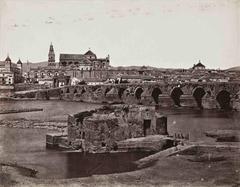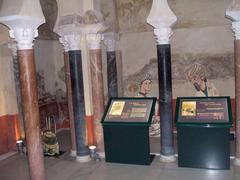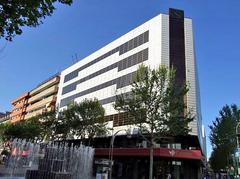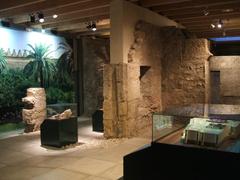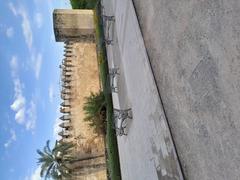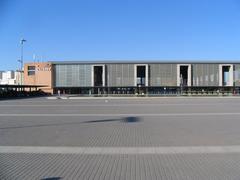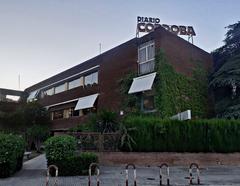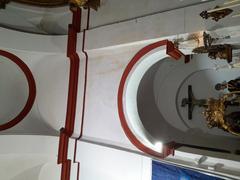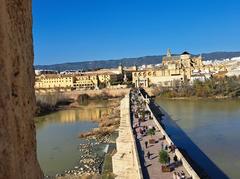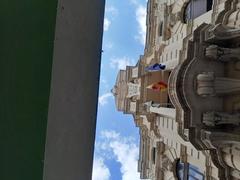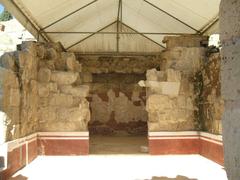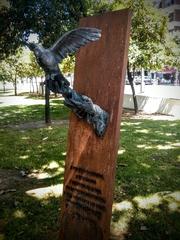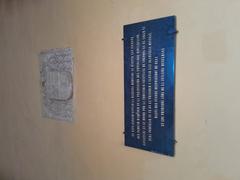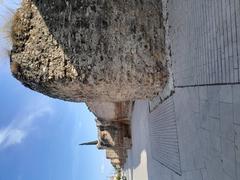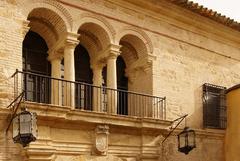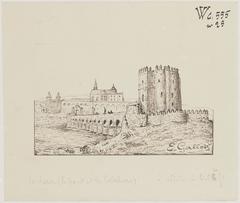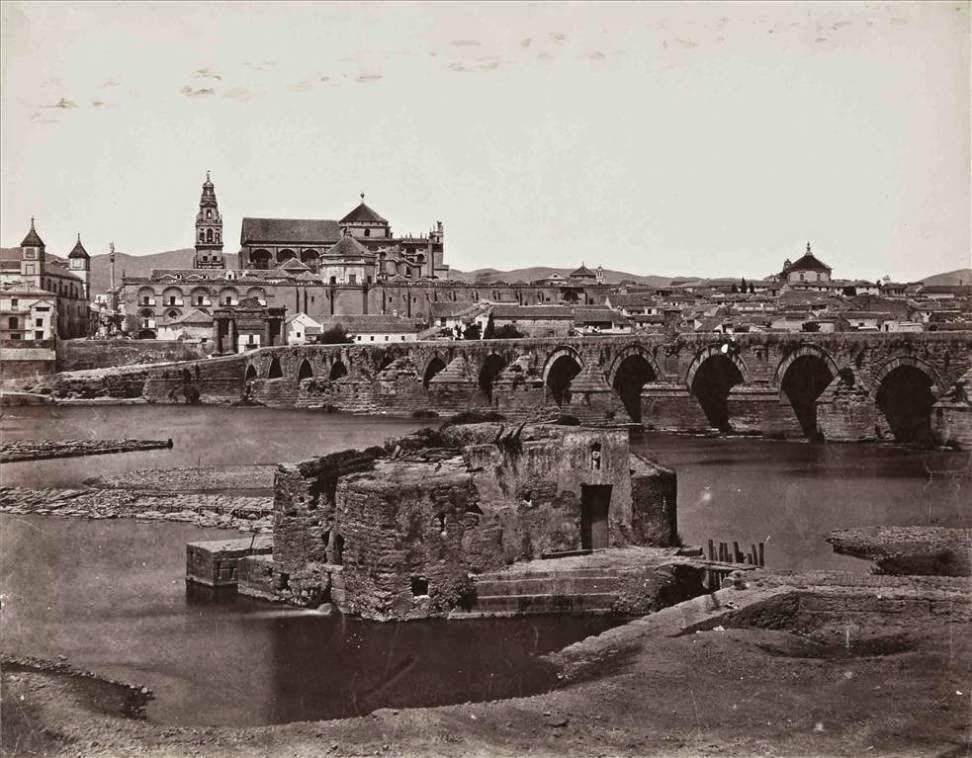
San Antonio Watermill Córdoba: Visiting Hours, Tickets, and Historical Sites Guide
Date: 14/06/2025
Introduction
Nestled along the banks of the Guadalquivir River in Córdoba, Spain, the San Antonio Watermill (Molino de San Antonio) is an enduring emblem of the city’s rich historical, technological, and cultural legacy. Built in the medieval period, this watermill is one of eleven that once powered Córdoba’s agricultural and industrial economy, blending Islamic and Christian influences in its architecture and function. Having withstood centuries of change, the mill today stands restored as a public heritage site, offering visitors a window into the city’s engineering ingenuity and vibrant past (turismodecordoba.org, legadoandalusi.es, mapcarta.com).
This comprehensive guide details everything you need to plan your visit: from opening hours and ticket information, to historical context, accessibility tips, and nearby attractions. Whether you are a history buff, architecture enthusiast, or simply a curious traveler, the San Antonio Watermill offers an unforgettable experience amid Córdoba’s UNESCO-listed historic quarter.
Contents
- Medieval Origins and Historical Context
- Architectural Features and Restoration
- Economic and Cultural Role in Córdoba
- Decline, Adaptive Reuse, and Modern Restoration
- Visiting Hours, Tickets, and Visitor Tips
- Accessibility and Practical Information
- Nearby Attractions
- Events and Festivals
- Sustainability and Preservation Efforts
- Frequently Asked Questions (FAQ)
- Planning Your Visit: Summary Table
- Conclusion and Recommendations
- Sources
1. Medieval Origins and Historical Context
The San Antonio Watermill traces its origins to the medieval period, when Córdoba flourished as a center of culture, science, and industry under both Islamic and Christian rule (turismodecordoba.org). The development of watermills along the Guadalquivir River began as early as the 10th century, utilizing dams and weirs to channel water for grain milling. These mills were vital to the city’s agricultural prosperity and urban sustenance, with early references highlighting their importance during the Caliphate of Córdoba (legadoandalusi.es).
Following the Christian conquest in 1236, ownership of many mills shifted to ecclesiastical authorities, reflecting their economic and social significance. Royal decrees, such as King Ferdinand III’s 1237 grant of several mill wheels, underscore the mills’ value as assets within Córdoba’s evolving society (legadoandalusi.es).
2. Architectural Features and Restoration
The original San Antonio Watermill was a modest, single-story structure, distinguished by its niche housing a statue of St. Anthony. Over centuries, the mill adapted to environmental challenges and technological advances, incorporating reinforced foundations and, initially, a large vertical waterwheel—an iconic element of medieval hydraulic engineering (turismodecordoba.org). Although the waterwheel disappeared from engravings by the 17th century, the building’s robust stonework and riverside position remain defining features.
In the early 21st century, architect Juan Cuenca led a meticulous restoration, completed in 2008. The project preserved the mill’s historical elements—wooden floors, main rooms, dike, and weir—while repurposing it as a cultural and exhibition space. This restoration ensures both the mill’s structural integrity and its accessibility for public enjoyment (turismodecordoba.org).
3. Economic and Cultural Role in Córdoba
For centuries, the San Antonio Watermill was integral to Córdoba’s food supply and trade, grinding grain for bread and supporting local markets (aithor.com). The Guadalquivir’s powerful current enabled efficient grain processing, and the network of mills contributed to the city’s wealth and prominence. Ownership of mills oscillated among religious orders, nobility, and municipal authorities, underscoring their value in both economic and social spheres.
Beyond its industrial function, the mill is embedded in Córdoba’s cultural memory—its image recurring in art, literature, and local festivals. It remains a symbol of the city’s ability to harness and adapt to its natural surroundings (legadoandalusi.es).
4. Decline, Adaptive Reuse, and Modern Restoration
With the advent of modern milling technologies, the San Antonio Watermill’s traditional role diminished by the mid-20th century. The building was repurposed as a boat workshop, serving river crossings, before falling into a period of neglect. Restoration efforts in the 2000s transformed the mill into a vibrant exhibition hall, preserving its legacy as a bridge between past and present (turismodecordoba.org).
5. Visiting Hours, Tickets, and Visitor Tips
Opening Hours:
- Monday to Friday: 10:00 AM – 6:00 PM
- Saturday and Sunday: 10:00 AM – 8:00 PM
- (Note: Hours may vary during festivals or special events. Always check the official tourism website for updates.)
Admission:
- Entry is free. Donations are welcome to support preservation efforts.
Guided Tours:
- Available on weekends and public holidays. Advance booking is recommended via the official Córdoba tourism website.
Visitor Tips:
- Visit during golden hours (early morning or late afternoon) for the best light and photographs.
- Dress comfortably and bring sun protection, especially in summer.
6. Accessibility and Practical Information
- Wheelchair Access: The site is equipped with ramps and accessible restrooms.
- Parking: Available in municipal lots nearby, though limited during peak seasons.
- Public Transport: City buses and taxis connect the historic center to the riverbanks.
- Restrooms & Facilities: Public restrooms are located near the Roman Bridge.
7. Nearby Attractions
Enhance your visit by exploring these nearby landmarks:
- Roman Bridge of Córdoba: Iconic 2,000-year-old bridge.
- Calahorra Tower: 16th-century defensive tower and museum.
- Mezquita-Catedral: Córdoba’s most famous monument, a UNESCO World Heritage Site.
- Albolafia Watermill: Neighboring mill with a reconstructed waterwheel.
- Jewish Quarter and Patios de San Basilio: Explore the city’s vibrant neighborhoods and famous courtyards.
8. Events and Festivals
During major events like the Fiesta de los Patios (May) and Feria de Córdoba (late May), the riverside comes alive with cultural activities, exhibitions, and increased foot traffic. Guided tours and special programs may be available during these periods (Travel to Paradiso).
9. Sustainability and Preservation Efforts
The San Antonio Watermill is recognized as a Bien de Interés Cultural (Asset of Cultural Interest) and is subject to ongoing conservation projects. Restoration has focused on structural stabilization, waterwheel reconstruction, and educational displays to ensure the site is preserved for future generations (legadoandalusi.es).
10. Frequently Asked Questions (FAQ)
What are the San Antonio Watermill visiting hours?
- Monday–Friday: 10:00 AM–6:00 PM; Sat–Sun: 10:00 AM–8:00 PM. Check the official site for updates.
Is there an entrance fee?
- Admission is free; donations are appreciated.
Is the watermill wheelchair accessible?
- Yes. Ramps and accessible facilities are provided.
Are guided tours available?
- Yes, weekends and public holidays. Booking in advance is advised.
Where is the best spot for photos?
- The facade facing the river and the views from the Roman Bridge are especially scenic.
Can I take photos inside the mill?
- Yes, for personal use.
11. Planning Your Visit: Summary Table
| Feature | Details |
|---|---|
| Location | Avenida del Alcázar, near Puente Romano, Córdoba, Spain |
| Access | On foot, by bus, or car (parking nearby) |
| Opening Hours | Mon–Fri: 10:00–18:00; Sat–Sun: 10:00–20:00 |
| Admission | Free (donations welcome) |
| Facilities | Benches, shaded areas, restrooms nearby |
| Accessibility | Wheelchair accessible |
| Nearby Attractions | Roman Bridge, Calahorra Tower, Mezquita-Catedral |
| Best Visiting Times | Spring, autumn, or early/late in summer for comfortable weather |
| Official Info | turismodecordoba.org |
12. Conclusion and Recommendations
The San Antonio Watermill stands as a testament to Córdoba’s innovative spirit and rich history. Its riverside location, architectural character, and accessibility make it a must-see for visitors interested in the city’s heritage. Combine your visit with explorations of the Roman Bridge, Calahorra Tower, and Mezquita-Catedral for a complete experience of Córdoba’s historic quarter.
To enrich your visit, download the Audiala app for audio guides and virtual tours, and stay updated through Córdoba’s official tourism channels. Respect the site and its preservation efforts, and immerse yourself in the living history of one of Spain’s most captivating cities.
13. Sources
- San Antonio Watermill in Córdoba: Visiting Hours, Tickets, and Historical Guide, Turismo de Córdoba
- Historical context and images of mills and the Albolafia of Córdoba, Legado Andalusí
- San Antonio Watermill in Córdoba: Visiting Hours, Tickets, and Historical Insights, Turismo de Córdoba
- San Antonio Watermill Visiting Hours and Guide to Córdoba Historical Sites, Turismo de Córdoba
- The Historical and Cultural Significance of Córdoba in Spain, Aithor
- Mapcarta: San Antonio Watermill Location
- UNESCO Historic Centre of Córdoba
